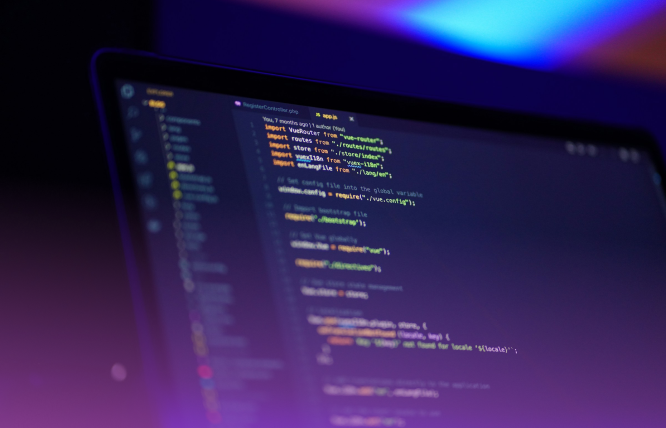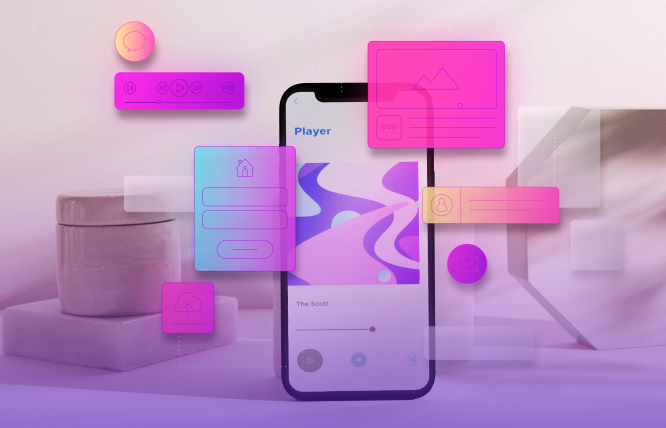Introduction
Let’s check out how Dart programming language simplifies app development with its efficient syntax, strong typing, and seamless integration with Flutter. It’s perfect for creating scalable, high-performance applications across platforms.
Dart is an open-source front-end development language created by Google that compiles into super-fast code. It is popular with Flutter, a UI toolkit that allows developers to build native-like applications for both web, mobile, and desktop from a single code. Dart has a strong typing model, clean syntax, and top-notch performance characteristics that simplify application development.
As developers seek tools that blend speed with flexibility, Dart programming language has emerged as a top contender. A recent survey found that Dart usage among developers grew by over 40% last year alone. That’s a testament to its increasing popularity and reliability.
Dart is setting the future of app development. With success stories from Alibaba, Google Ads, and more, you can imagine the success behind Dart!
The Evolution of Dart: A Brief History
Dart was introduced in 2011 by Google to overcome some drawbacks of existing programming languages. Initially, Dart was developed for the web, but within three years, it extended its presence to smart mobile devices and web servers.
Through the years, Dart has undergone vast improvements, including the addition of Flutter. Flutter, the UI toolkit by Google for building natively compiled applications, remains dependent on Dart, which is a giant leap for the toolkit. Due to its ability to provide the best-in-class performance and usability, Dart is much loved by developers when it comes to building powerful applications that run on multiple platforms.
Understanding Dart’s Purpose in App Development
So, what makes Dart stand out in programming languages for app development? Iits purpose: To simplify and speed up the development process while maintaining performance.
Dart is engineered to be easy to learn and use, with a syntax familiar to developers from other programming backgrounds.
The language supports both JIT and AOT compilation, which creates the opportunity for Dart Apps to run fast. This dual compilation allows for faster development and high-performance execution, which makes the Dart programming language a preferred choice for app developers.
Breaking Down Dart Syntax
Now let us focus on Dart syntax and see why this language is indeed easy to learn and great for our purposes. Dart’s syntax follows the notion of keeping it simple and is influenced by languages such as JavaScript and Java.
Variables and Data Types: Dart uses a straightforward way to declare variables. For instance, you can declare a variable with var, final, or const,depending on whether the value is mutable or immutable. For example:
Dart
var name = ‘Cafe Java’; // Mutable
final location = ‘Downtown’; // Immutable
Functions: Functions in Dart are clean and concise. You define a function using the void keyword for functions that don’t return a value or specify a return type if needed. For instance:
Dart
int add (int a, int b) {
return a + b;
}
Classes and Objects: Dart is object-oriented, which means you’ll work with classes and objects. Here’s a simple class example:
Dart
class Coffee {
String name;
double price;
Coffee (this.name, this.price);
}
Dart’s syntax is both easy to read and write, making it a friendly option for developers of all levels.
Why Dart is the Best for Efficient and Scalable Apps
Dart excels in creating efficient and scalable apps. Its focus on speed and flexibility is a perfect fit for today’s demanding app development landscape.
- Dart’s AOT compilation ensures smooth, responsive apps.
- Hot reload lets you see changes instantly, boosting productivity.
- Cross-platform compatibility enables you to build apps for iOS and Android with a single codebase.
- Dart handles large, complex projects with Dart’s strong typing and modern features.
Dart provides the tools and features needed to build efficient, scalable applications with ease.
Dart vs. Other Languages: A Comparative Overview
When deciding on a programming language for app development, Dart is frequently the preferred choice. Here’s how it compares to some popular alternatives:
Dart vs Swift: Swift, Apple’s language for iOS development, is powerful but limited to Apple’s ecosystem. Dart, on the other hand, supports both iOS and Android, making it a better choice for cross-platform apps.
Dart vs. Kotlin: Kotlin, like Dart, is modern and developer friendly. However, Dart’s integration with Flutter provides a unique advantage for building natively compiled applications that run on multiple platforms from a single codebase.
Dart vs. JavaScript: While JavaScript is versatile and widely used, Dart provides a more structured and performance-oriented approach, especially with its static typing and compilation features. Dart’s strong integration with Flutter also sets it apart for cross-platform mobile development.
While other languages have their strengths, Dart’s combination of performance, cross-platform capabilities, and developer-friendly features make it a compelling choice for modern app development.
Best Practices for Using Dart in Your Projects
Follow these best practices in order to maximise the benefits of Dart and ensure that your projects are both efficient and maintainable:
- Stick to Consistent Coding Standards: Consistency is key in any programming project. Adopt a set of coding standards and stick to them. This includes naming conventions, code formatting, and documentation. Tools like Dart’s built-in formatter can help keep your code clean and consistent.
- Use Effective State Management: For larger projects, managing the state efficiently is crucial. Explore state management solutions like Provider, Riverpod, or Bloc to handle state changes effectively. This will help you keep your code organised and responsive.
- Leverage Dart’s Strong Typing: Dart’s strong typing system helps catch errors early. Use it to your advantage by defining precise types for variables and function parameters. This not only improves code readability but also reduces runtime errors.
- Write Unit Tests: Testing is essential for maintaining code quality. Write unit tests for your Dart code to ensure that it behaves as expected. Dart’s testing library provides robust tools to help you create and run tests.
- Optimise Performance with Asynchronous Programming: Dart excels in asynchronous programming. Use async and await to handle tasks that take time, like fetching data from an API.
- Keep Dependencies Up-to-Date: Regularly update your Dart packages and dependencies to benefit from the latest features and security improvements. This helps maintain compatibility and ensures that your project runs smoothly.
- Utilise Flutter’s Widget Tree: When using Dart with Flutter, understand and leverage the widget tree effectively. It’s a powerful way to build and manage your app’s UI, making it easier to design complex interfaces.
Real-World Applications and Success Stories with Dart
Dart isn’t just a theoretical tool—it’s used in various successful projects across industries. Here are some real-world examples showcasing Dart’s impact:
- Google Ads: One of the most notable examples of Dart in action is Google Ads. The app leverages Dart’s performance and cross-platform capabilities to provide a seamless experience for users managing their ad campaigns. It’s a prime example of Dart’s efficiency and scalability.
- Alibaba: Alibaba, one of the world’s largest e-commerce platforms, uses Dart and Flutter for its Xianyu app. The app, which supports millions of users, benefits from Dart’s smooth performance and Flutter’s rich UI capabilities. This combination helps deliver a high-quality user experience.
- Reflectly: Reflectly, a popular journaling app, uses Dart and Flutter to create a visually appealing and responsive interface. The app’s success is a testament to how Dart can be used to build engaging and interactive user experiences.
- Hamilton Musical App: The official app for the hit musical Hamilton utilises Dart and Flutter to provide fans with an engaging and interactive experience. The app’s smooth performance and rich features highlight Dart’s ability to support complex applications.
These success stories demonstrate Dart’s versatility and power in real-world applications. Dart lets you create strong and easily expandable solutions, whether for a busy e-commerce website or a well-liked mobile application.
Conclusion
Dart has proven itself as a game-changer in the realm of app development, offering a blend of performance, flexibility, and simplicity. From its strong typing system and efficient state management to its cross-platform capabilities through Flutter, Dart equips developers with the tools they need to build high-quality, scalable applications.
Real-world success stories from industry giants like Google Ads and Alibaba highlight Dart’s effectiveness in handling complex projects and delivering seamless user experiences. Its practical features, such as hot reload and asynchronous programming, make it a valuable asset for both new and experienced developers.
As the tech landscape continues to evolve, Dart stands out as a language that not only meets today’s demands but also sets the stage for future innovations. If you’re looking to streamline your development process and create robust, scalable apps, Dart might just be the secret weapon you need.
Frequently Asked Questions
At FuturByte, we believe Dart excels in mobile and web app development, especially with Flutter, while Python is best when dealing with data science and scripting. So, it depends on your project needs.
Dart is primarily used for front-end development, especially with Flutter for mobile and web apps. However, it can also be used for backend development with tools like Dart Frog.
Dart was created for developing apps quickly and with scalability in mind. Flutter utilises Dart to construct native applications for mobile, web, and desktop with a unified codebase.
Yes, at FuturByte, we can create powerful, scalable apps using Dart, especially with Flutter, for a smooth cross-platform experience.
Have questions or feedback?
Get in touch with us and we‘l get back to you and help as soon as we can!




